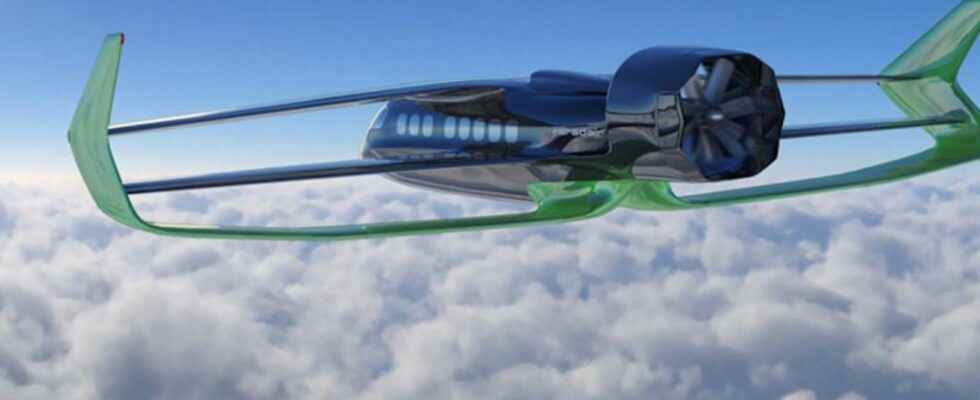You will also be interested
[EN VIDÉO] Carbon-neutral kerosene for our planes Researchers have developed a reactor that can produce liquid fuel, like the kerosene that powers our planes, from just water, carbon dioxide (CO2) and solar energy. From the heat that comes to us from the sun, more precisely. Thanks to a concentrator which raises the temperature to 1,500°C and triggers useful chemical reactions in the reactor. (in English) © Swiss Federal Institute of Technology Zurich
To reach zero emission of carbon by 2050 promised by the International Air Transport Association (Iata), aircraft manufacturers are carrying out numerous projects aircraft heterogeneous mix of energy-efficient architectures energyand electric motors or hybrids powered by biofuels or elsehydrogen. Among the projects in progress, there is that of the British company Faradair. Based in Duxford, Cambridgeshire, she plans to fly her Bio Electric Hybrid Aircraft (Beha), a hybrid triplane that can carry up to 19 people over short distances.
As with all electric-powered aircraft projects, the concern remains the weight of the batteries, hence the choice of a system hybrid, combining an electric motor with a small turbine powered by bio-fuel. Solar panels on the plane’s wings keep the battery charged on the ground.
It is in a museum of Aeronautics, around mythical planes such as the Spitfire, that the CEO of Faradair, Neil Cloughey presents his Beha hybrid plane. © Farader
Eco-friendly and cheaper than the train
To increase the liftFaradair chose an architecture triplane. Yet abandoned since the First World War, this process provides very good lift with a smaller wingspan. The other advantage is that the triplanes are more maneuverable, and can take off and land on short runways. They also quickly gain altitude. The big drawback is the significant drag generated by the three wings. To reduce it, Faradair imagined a particular shape of wing with at the end of large winglets.
The Beha will enable short-haul flights between major cities such as London and Manchester. The aircraft manufacturer estimates that the price for the passenger would be around 30 euros, i.e. cheaper than a train ride between these two cities. Faradair says the aircraft’s operating costs are expected to be low and the Beha will also have the added benefit of being quiet and durable. Faradair plans to fly its first planes by 2025 and even plans to operate commercial flights from 2027.
A desire to escape for the summer?
To celebrate the holidays as it should be, discover the Mag Futura at the preferential price of €15 instead of €19, i.e. a reduction of 20% !
On the program of this issue: a dive into the heart of 4 scientific themes that will mark 2022, from the Earth to the Moon:
- What mysteries does the Moon still hide from us?
- Will we soon be able to cure everything thanks to genes?
- How to feed the world without destroying it?
- Can artificial intelligence become truly intelligent?
What is Mag Futura?
- Our first paper journal of more than 200 pages to make science accessible to as many people as possible
- 4 major scientific questions for 2022, from the Earth to the Moon
- Home delivery*
*Delivery is made in France (excluding metropolitan France), Switzerland, Belgium.
Interested in what you just read?
